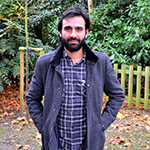 Sociology has tried, with mixed success, to define a realm of analysis that goes beyond the individual, and to grasp what is “in-between,” using names like “interaction,” “structures,” “communication,” or “culture.” I mention this because, if we want to come up with ways to improve the relationship between doctors and patients, we need to try to think in terms that go beyond the individual doctor, and the individual patient.
Sociology has tried, with mixed success, to define a realm of analysis that goes beyond the individual, and to grasp what is “in-between,” using names like “interaction,” “structures,” “communication,” or “culture.” I mention this because, if we want to come up with ways to improve the relationship between doctors and patients, we need to try to think in terms that go beyond the individual doctor, and the individual patient.
Recently I was invited to take part in the Salzburg Global Seminar session 553 called “Toward a Shared Culture of Health: Enriching and Charting the Patient-Clinician Relationship” (Jemma Bate wrote an excellent piece on transparency, based on the same event). And within the seminar, I worked with a team specifically looking at the interaction between patients and doctors.
It was easy to engage in a deep conversation about the clinical encounter and its problems, we all shared personal anecdotes and formal knowledge about patterns of indifference and dehumanisation across a wide spectrum of settings and in different countries. We also agreed on the possible sources of the problem, including time constraints, organisational dynamics, and larger trends in society. However, it was very hard to identify practical ways to address this.
More specifically, it was difficult to overcome the tendency to frame the “solution” in terms that fall either on the side of the clinician (as empathy) or on the side of the patient (as empowerment). On the one hand, this is exemplified by an almost infinite reliance on the medical curriculum in its potential to change the way clinicians communicate with patients. On the other, it’s increasingly common to locate the responsibility on the patient, who is expected to “break the ice,” asking their clinicians the right questions, and using their time wisely. And while I think there’s still plenty of potential in both areas, something was missing, the “in-betweenness”: how do we make sense of the interaction itself?
In this context I came up with the idea of a “mini-biography.” Before the clinical encounter, both patients and doctors could have access to a brief (100 to 200 words) self-description of each other. This means that every clinician (and other members of staff) working in a health facility, and every patient attending that facility would produce a publicly available mini-bio. This could contain information that goes beyond formal qualifications or professional achievements: hobbies, favourite things, or even a quote from a book. The most important thing is that both the clinician and the patient are free to choose how to describe themselves in 100 words.
The medium to make this information available could be flexible. For the patient, depending on resources and technological conditions, the information could be provided online, it could be displayed on digital screens in a waiting room, or it could be a printed booklet available in the waiting area with a collection of pictures and mini-bios of the clinicians working in that facility. The doctor, on the other hand, could access the patient’s mini-bio directly on his health record—in a digital or physical form.
The idea was well received by the mix of clinicians and patients gathered in the session. It was observed, nonetheless, that some doctors might be reticent to disclose this kind of information, for personal reasons, or because they value a degree of professional distance. While this might be the case for certain areas of healthcare, in general patients can feel routinely ignored by professionals in the health system. This was clearly revealed by the massive popularity of the #HelloMyNameIs campaign initiated by terminally ill Kate Granger, whose simple aim was to encourage healthcare professionals to introduce themselves. Studies revealing the role of “onymity” (the contrary of anonymity) in the development of trust and cooperation give added support to this idea.
If only knowing each other’s name improves the interaction, having access to a mini-bio before the clinical encounter takes place could create what sociologist Werner Nothdurft calls a “conversational space” that allows for types of questions and answers that go beyond the identification of a medical problem and the definition of a course of treatment. More specifically, if we follow Wiener and Schwartz invitation to “listen to what matters”, as well as information, the bio could provide conversational cues for the doctor to explore aspects of the patient’s life in an un-invasive way, for the sake of a diagnosis and a treatment plan that is truly “patient centred.”
Cristian R. Montenegro, PhD Student, Department of Methodology, London School of Economics and Political Sciences.
Competing interests: None declared.
